Design Principles
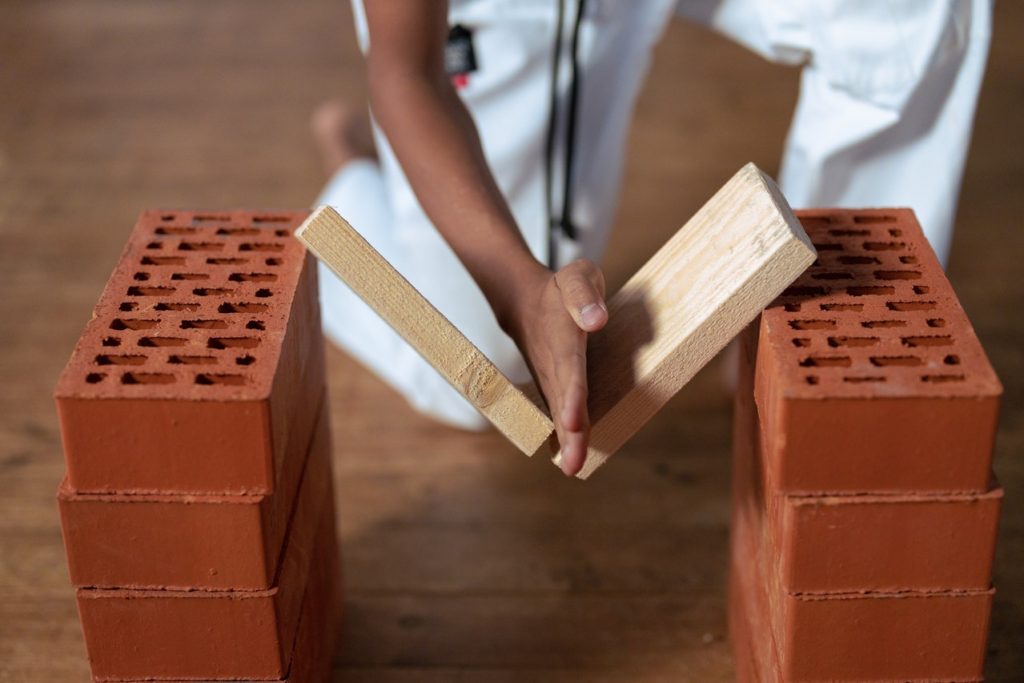
Solid constructions break even under slight deformation. The direct transmission of pressure forces leads to buckling in the structure even when the plain material might in theory resist compressive strength.
Solid constructions fracture under heavy mechanical burdens, especially when there is a direct force.
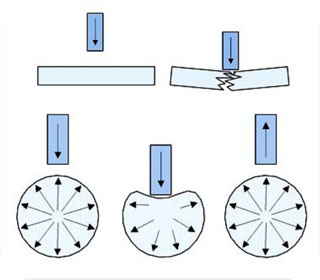
With pneumatic constructions the inner pressure is distributed evenly on the outer membrane and the structures and converted into pure tensile forces, which cannot cause any buckling. The construction has a specific fluidity and reverts to its natural form the moment that any pressure is removed.
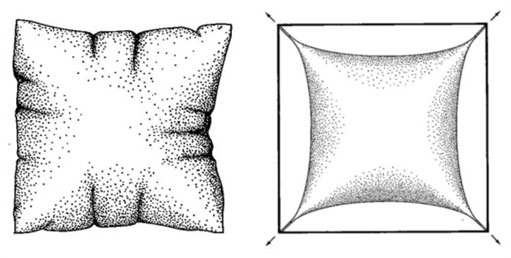
The inner pressure automatically seeks to find its own form, the outer surface assuming the minimum surface area by maximum volume.
This is the principle of the sphere. If the membrane differs considerably from the spherical form this results in differing pressures causing a cushion effect, whilst an excess of irregular pressure on the outer surface leads to an uneven pressure in the membrane which can cause folds and eventually rips in the surface. This is to be avoided in the development of pneumatic building structures.
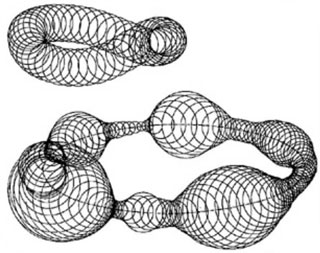
To find a smooth and wrinkle-free shape, the following rule applies: If spheres with the same or different diameters are guided through their centers along one or more vector-lines, and the membrane surface is tangent to each of these spheres in a completely circular outline, then this form is suitable as a pneu. This applies, for example, to sphere, torus, cylinder and cone cross-sections
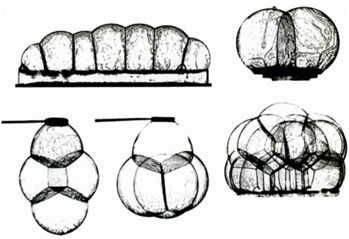
Already in the 1950’s Frei Otto was experimenting with soap bubbles and through the process of independent naturally occurring forms already made important discoveries relating to cells (pneus). The outer surface assumes a form whereby the pressure in the membrane is minimized and is equivalent in all places. The larger the diameter of the bubble the larger the outer tension under the same air pressure. Therefore in the case of smaller bubbles the inner pressure is higher to retain the balance of the surface tension.
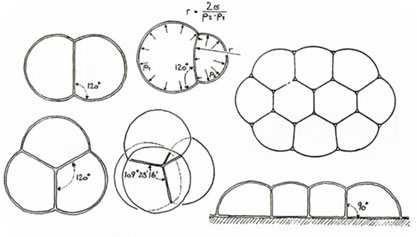
When two or three bubbles adhere to each other they form an even wall between themselves (assuming the inner pressure is equivalent). The outer membranes result in a 120° angle. In the case of a grouping of four they develop an angle of 109°. This is the basis of all foam and these naturally occurring forms have a minimal surface area in relation to their volume.
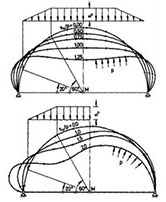
Extremely large pneus such as air halls distort often drastically under asymmetrical pressure such as wind pressure and the distortion severely diminishes their load bearing capacity.
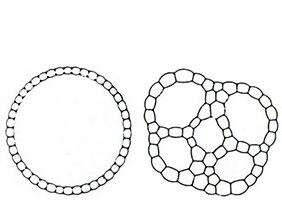
When the pneumatic construction is divided into a series of cells which distributes the volume, the constructions become more stable and less sensitive to pressure. Biological cells utilize this principle and Pneumocell uses this very same concept.
